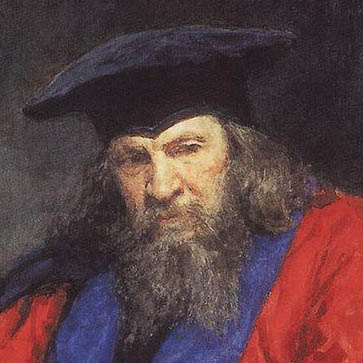Kings & Queens of England:
cigarette cards issued by John Player & Sons, 1935
Predominant constituent unit of the United Kingdom, occupying more than half the island of Great Britain.
It is bounded on the north by Scotland; on the west by the Irish Sea, Wales, and the Atlantic Ocean; on the south by the English Channel; and on the east by the North Sea.

William I
1066-1087
William, Duke of Normandy was the fitting hero of a brutal time. With an eye that could quell the fiercest baron and a fist that could fell an ox, he ruthlessly subdued his rebellious duchy, trumped-up a claim to the English throne, and in a few quick battles conquered a divided country. His devastation of the north and his savage forest laws made him unpopular; but he gave England an efficient government, made the great Domesday survey of the land and controlled the barons. After losing his devoted wife, Matilda of Flanders, William had few friends. He died at Rouen in 1087.
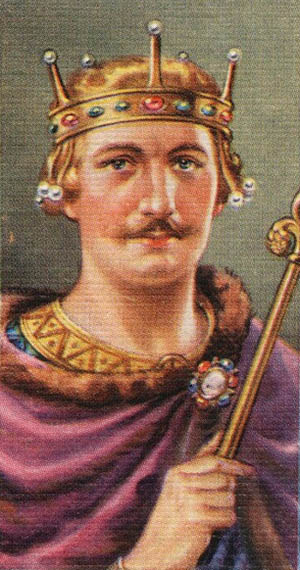
William II
1087-1100
William Rufus had a red face and a hot temper. For a while, under the restraining influence of Archbishop Lanfranc, he continued his father’s sound govrnment, but after the Archbishop’s death he gave way to extravagance and cruelty. Except when sick, he refused to heed Saint Anselm’s sound advice, and filled England with unworthy favourites who oppressed the people. Rufus had physical courage, but few other admirable qualities. Hunting was his passion, and he was killed in the New Forest by a stray arrow. Walter Tyrrell, one of the hunting party, was blamed for the deed, probably unjustly.
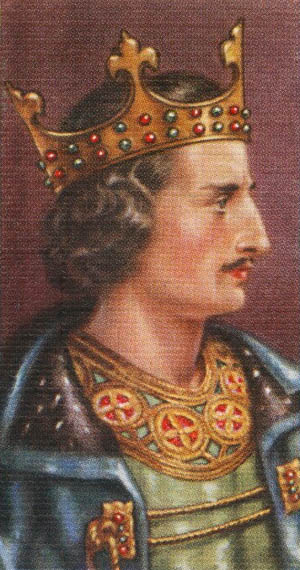
Henry I
1100-1135
Henry Beauclerc was the best educated of the Conqueror’s sons. Like all his race, he loved outdoor sports, but he could read his own letters, and when he founded a zoo at Woodstock, it was to study animals. Henry gave England good laws, “so that no man durst hurt another. He inflicted ferocious punishment, but was called the “Lion of Justice.” He preferred craft to warfare, and managed to keep his realms intact. Henry’s marriage to Matilda, who was descended from the English kings, was very popular. He doted on his son, and when Prince William was drowned in the White Ship, his father “never smiled again.”
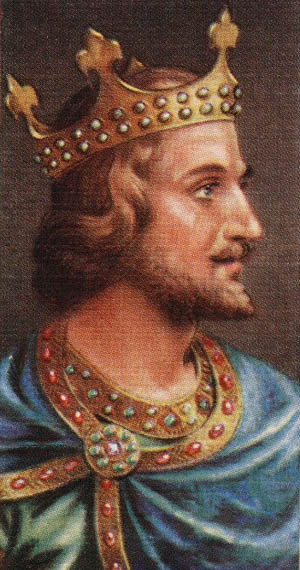
Stephen
1135-1154
The so-called reign of Stephen was one of the most miserable in English history. While he was fighting his cousin, Matilda, for the crown, the Norman barons “forced the folk to build them castles, and filled them with de3vils and evil men.” They extorted money “with pains unspeakable,” and looted town and country. “Well mightest thou walk a whole day’s faring nor ever find a man inhabiting a township, or tilled lands.” Yet Stephen himself was the pattern of chivalry: brave, kindly, courteous. He was, however, too good-natured, easily fooled, and incapable of planning operations on a large scale.
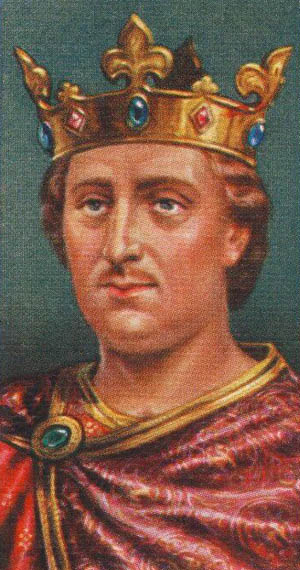
Henry II
1154-1189
Henry of Anjou, an exceptionally able King, found England devastated by civil war, and left it prosperous and law-abiding. A brilliant soldier, he extended his French dominions until he ruled most of France. He found his match in Thomas Becket, who challenged the royal control of the Church. “Who will rid me of this turbulent priest?” cried the exasperated King. Four knights murdered the Archbishop in Canterbury Cathedral, and although Henry did public penance, his prestige waned. Old foes attacked him; his sons rebelled. When he found that even his favourite, John, was against him, Henry died broken-hearted.
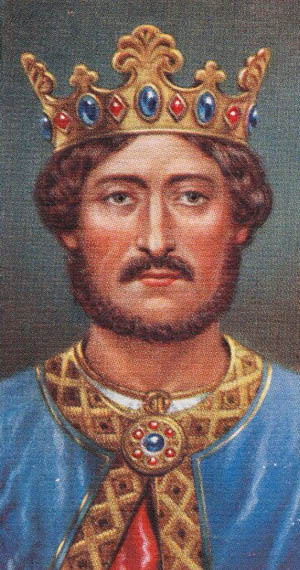
Richard I
1189-1199
Fighting was the breath of life to Richard Lionheart, and the Third Crusade appealed to his romantic piety. In the Holy Land he performed miracles of valour, but failed to capture Jerusalem. His personal magnificence, and the gorgeous pageantry of his quest, caught the imagination of Europe. When a treacherousally threw him into prison, the ransom money was raised in England and France. Fond of wine, women and song, Richard cared little for state-craft, and would sell any office to raise money for his interminable exploits on the Continent. He died from an arrow-wound, far from the Kingdom which he had so seldom visited.
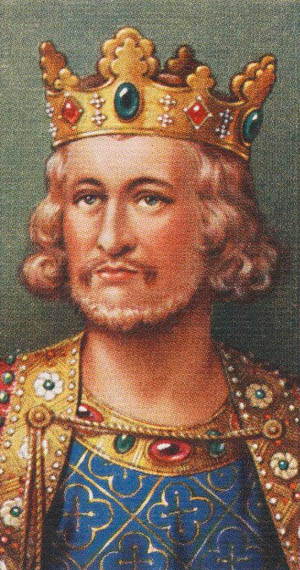
John
1199-1216
John Lackland was the youngest son of Henry II. Short and fat, he envied his splendid brother, Richard I whom he succeeded. When he became King, John Divorced his wife and married Isabella of Angouleme, a girl of about thirteen. John soon relapsed into sloth and self-indulgence. Plundering the rich, oppressing the poor, he roused all men against him. The Pope excommunicated him; the barons forced him to accept Magna Carta. He died from over-eating-a fugitive from his enemies. Though clever, John was cruel and completely selfish; he has been termed the “worst English king.
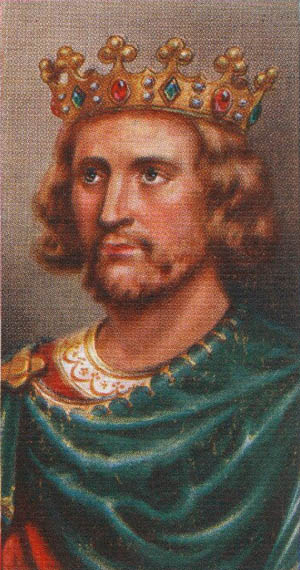
Henry III
1216-1272
Henry succeeded his father, John, at the age of nine. Brought up by priests he became devoted to church art and learning. Henry proved a weak ruler, dominated by churchmen and by his wife’s French relations. Large sums were spent on expeditions to France and on church-building (notably at Westminster). Constant demands for money provoked the barons to rebel, and, led by Simon de Montfort, they gained control. Prince Edward rallied the royalists and reinstated his father. Henry was personally an agreeable fellow-fond of good company, music and poetry. He had all the private virtues, but lacked statesmanship.
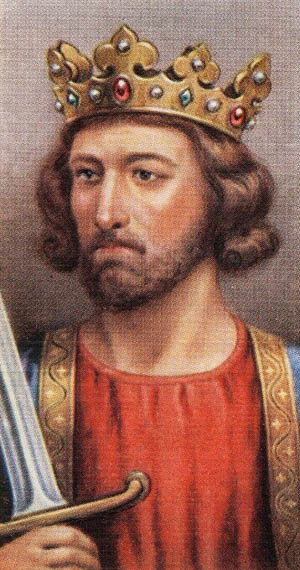
Edward I
1272-1307
Edward Longshanks, called “The English Justinian” for his legal reforms, was also a great warrior. Aiming at a united Britain, he defeated the Welsh chieftains, and created his eldest son “Prince of Wales.” He was known as “the Hammer of the Scots” for his victories in Scotland, and brought from Scone to Westminster the famous coronation stone. He died on the way to fight Robert Bruce. Edward was an athlete and loved tournaments. He married twice; when his first wife died, he escorted her remains from Grantham to Westminster, setting up at every halting-place “Eleanor Crosses,” some of which still stand.
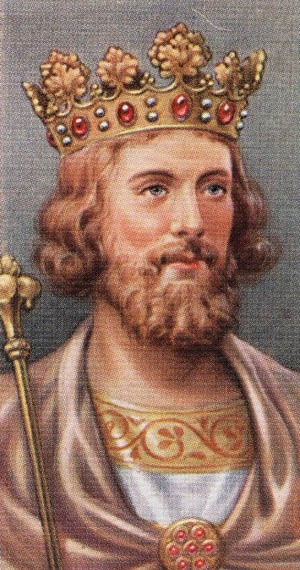
Edward II
1307-1327
Edward II, who cared nothing for battles or tournaments, politics or business, spent his youth idling with Piers Gaveston; pitch and toss was his favourite game. He allowed many abuses to creep back into government, and made a ludicrous show at Bannockburn, where the English army was routed by the Scots. Amiable but weak-willed, Edward always relied on favourites. After Gaveston had been hanged, he clung to the Despensers. He offended his wife, who joined her lover Mortimer in deposing him; by their orders Edward was murdered in Berkeley Castle. His beautiful tomb in Gloucester Cathedral was erected by his son, Edward III.

Edward III
1327-1377
Edward III was a grand fighter and a capable administrator. His ambition to conquer Scotland and France plunged England into the fruitless Hundred Years’ War. A series of sensational victories at Crecy, Calais and Poitiers made Edward, and his son, the Black Prince, the most renowned warriors in Europe. But neither French loot, nor the ransoms of the Scottish and French Kings, nor a skilful commercial policy, could pay for their continual campaigning. As Edward grew older, his vices and extravagance made him disliked. A population halved by the Black Death groaned under heavy taxes, and Edward’s reign closed in gloom and distress.
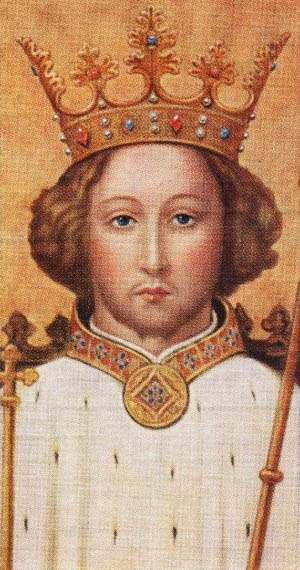
Richard II
1377-1399
At the age of fourteen the son of the Black Prince showed his courage in facing an angry crowd at Mile End. He took charge of the government at twenty-two, and made a genuine effort to preserve peace. Tournaments and pageants made England a merry place for the wealthy, but there was want and pestilence among the poor. Queen Anne’s sudden death completely unbalanced Richard. His extravagance passed all bounds; acts of revenge and tyranny turned his subjects against him. When Henry Bolingbroke returned from exile, thousands joined him, and Richard was deposed, dying mysteriously in Pontefract Castle soon afterwards.
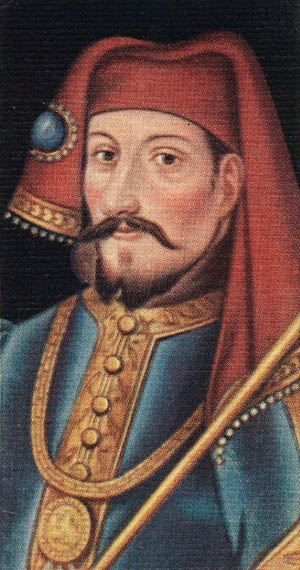
Henry IV
1399-1413
A far-sighted young man, Henry Bolingbroke spent his youth making himself popular in England and abroad. At the right moment he deposed his unlucky cousin, Richard II, and made himself King. The new monarch quickly learned how “uneasy lies the head that wears the crown;” his brief reign was largely taken up with maintaining his position against frequent rebellions. As a youth Bolingbroke was attractive: physically imposing, though his health was poor; rather reserved, but courteous: on occasion very witty; virtuous at a time of much depravity. In later life he suffered from disease, and died at the age of forty-five.
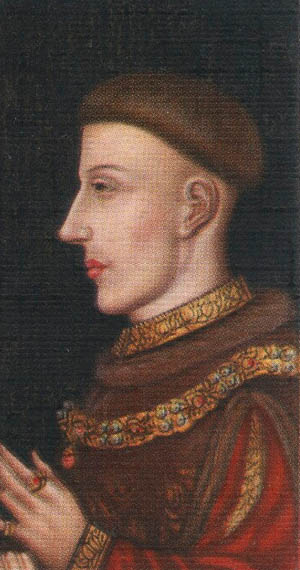
Henry V
1413-1422
Henry’s youth was merry, but on succeeding his father he devoted his whole attention to government. He conciliated the clergy by repressing heresy, gave Parliament more power in return for money, and pleased the nobles by invading France, “in pursuit of homour.” Inspired by the King’s leadership, the “little band of brothers” defeated a huge French army at Agincourt. On a second expedition Henry captured Rouen, was recognized as the next King of France and married Princess Katherine. Two years later he was dead. By his contemporaries Henry was regarded as an ideal King-brave, cheerful, considerate and modest.
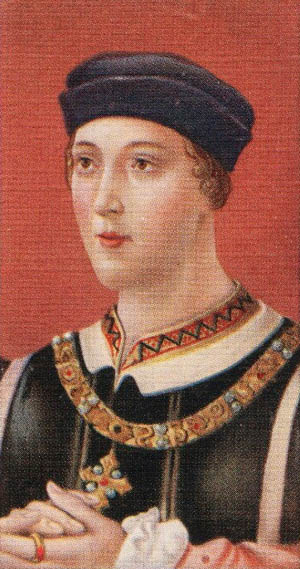
Henry VI
1422-1461
Fate cast this son of the warrior Henry V into a sea of troubles. The war party in England was strong and the impossible attempt to hold his father’s conquests in France continued. The House of York challenged Henry VI’s right to the throne, and England was plunged into civil war. Frequently a fugitive, sometimes a prisoner, at best a puppet of Warwick “the King-maker,” the half-crazy King, consoled by religious exercises, patiently submitted to the grossest indignities, culminating in his murder in the Tower. Eton and King’s College, Cambridge still revere their founder’s “holy shade.”
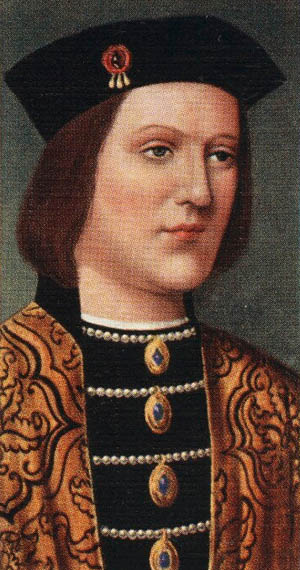
Edward IV
1461-1483
Highly-gifted, and trained in Machiavellian statecraft by Warwick, who made him King, Edward, Duke of York, was unscrupulous in achieving his ambitions. Warwick soon discovered that he was no puppet, and was eventually killed fighting against hi pupil. Edward’s rebellious brother, Clarence, was judicially murdered, a crime which haunted the King throughout life. When firmly established, Edward proved a capable despot, though lazy. He was over-reached in diplomacy by the wily Louis XI of France. A tall handsome man, he lived luxuriously, and patronized the New Learning (notably Caxton, the first English printer).
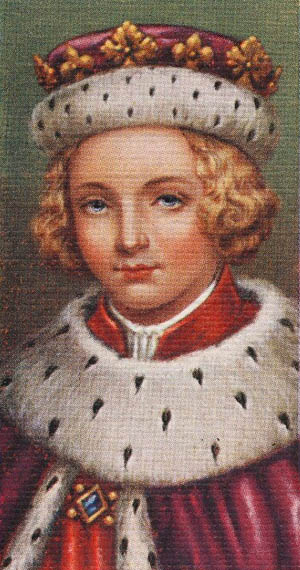
Edward V
April to August, 1483
This tragic little prince, the son of Edward IV, was carefully trained as the future King, but his father died before he was fourteen, and the boy-King was at the mercy of his unscrupulous uncle, Richard, Duke of Gloucester. Edward and his brother were thrown into the Tower, and never seen outside its walls again. Two centuries later, the bones of two children were discovered under the stairs of the White Tower and wee then properly buried in Westminster Abbey in 1933 an inspection showed that they were remains of boys of the right age and bore signs of strangulation.
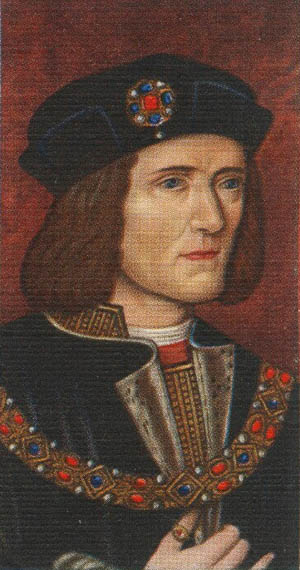
Richard III
1483-1485
So great were the losses in the Wars of the Roses that when Edward IV died, only two little princes stood between Richard Crouchback and the crown. Though small,
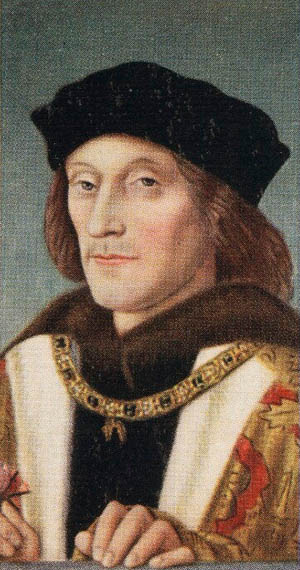
Henry VII
1485-1509
When Richard III fell at Bosworth Field, his crown was picked up and placed on the head of Henry Tudor. The new King was the son of a Lancastrian heiress and married Elizabeth of York, thus uniting the two “Roses.” Henry devoted his reign to curbing the power of the nobles, aiding commerce and amassing wealth. He encouraged the Cabots to explore North America, and built his magnificent chapel at Westminster. His brilliant court was thronged, but he had few friends. He died at fifty-two leaving to his son, Henry VIII, a full treasury and a land at peace.
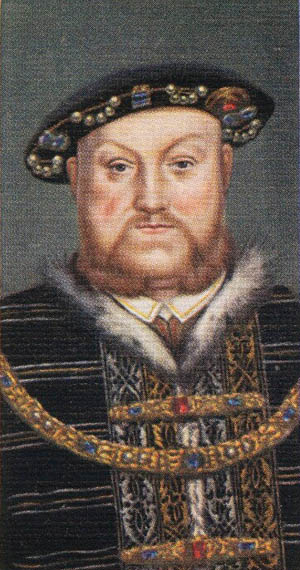
Henry VIII
1509-1547
The second son of Henry VII was not wholly the tyrannical monster of popular legend, but he executed two and divorced two more of his six wives. His passion for Anne Boleyn was one reason for his divorce from Catherine of Aragon and the immediate cause of the severance from Rome, which is the outstanding event of his reign. His other marriages sprang from the need of securing the succession. Cruel and capricious, with an intellect above the average, and possessing the sense of greatness, he made himself a dominant figure in Europe, and inspired equally fear and devotion in his subjects.

Edward VI
1547-1553
The son of Henry VIII and Jane Seymour, Edward succeeded his father at the age of nine, the government being carried on by a Council of Regency of which the head was his uncle, the Duke of Somerset, styled Protector. Precocious in learning, he was lacking in affection or sympathy, and when Somerset was attacked readily consented to his execution. He was ardent in the Protestant religion, and was strongly influenced by Latimer and Ridley. Sickly throughout his short life, he died of consumption, devising the Crown to his Protestant cousin Jane Grey, to the exclusion of his sisters.
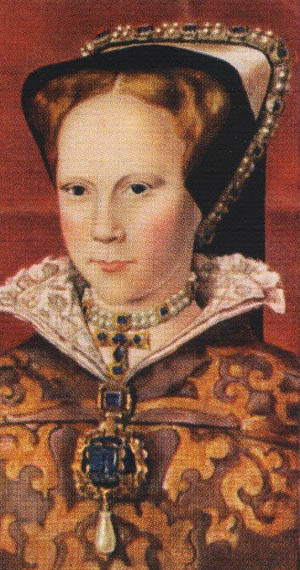
Mary I
1553-1558
Daughter of Henry VIII and the Spaniard, Catherine of Aragon. A fervent Catholic, suffering deeply in youth as her mother’s daughter, she succeeded her brother determined to restore England to Rome. With this object she married Philip of Spain, appointed Cardinal Pole to Canterbury and adopted the policy of persecution that has covered her name with odium. Dignified, fond of splendour, loving music, charitable and by nature humane;

Elizabeth I
1558-1603
Elizabeth was the daughter of Henry VIII and Anne Boleyn. Her long reign saw the flowering of the English Renaissance, the beginning of imperial expansion and the rise of England to the position of a first class power. A consummate statesman, she embodied the spirit of command and possessed in the highest degree the gift of compromise; though more Protestant then Catholic, she probably had no real convictions beyond that of the greatness of England and her own majesty. She was subtle, unscrupulous, parsimonious and supremely successful, and inspired an almost mystic devotion among her servants and subjects.
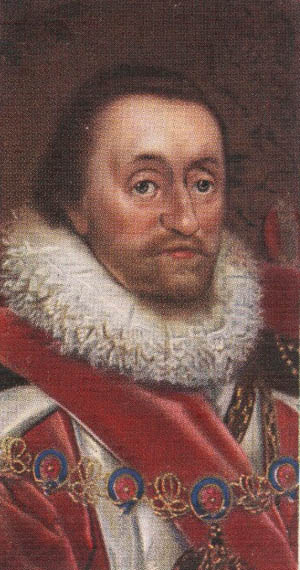
James I
1603-1625
The son of Mary, Queen of Scots, and Lord Danley, James was a man of deep, if narrow, learning. Pious and tolerant, he was yet an unsuccessful ruler; his desire for peace and religious freedom was remote from the mood of Europe and helped to make him very unpopular at home. His attempted alliance with Spain, England’s traditional enemy, angered the people and Parliament was alienated by his delegation of authority to irresponsible favourites, especially to the magnificent and hated Duke of Buckingham. James married Anne of Denmark.
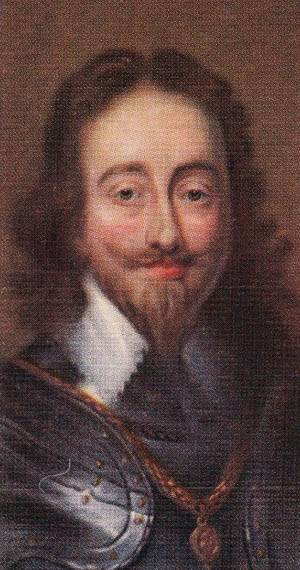
Charles I
1625-1649
Charles was the son of James I and Anne of Denmark. It is not always remembered that he was the most enlightened patron of the Arts that has occupied the English throne, and one of the foremost connoisseurs in Europe. Inheriting a belief in the divinity of Kingship, he tried to carry out theories of government unacceptable in that age. His father’s weaknesses, his unshakeable beliefs and the angry temper of Parliament led to Civil War, to his final defeat, to revolution and to the execution which shocked the civilized world and which more than anything in his life has made his name endure.
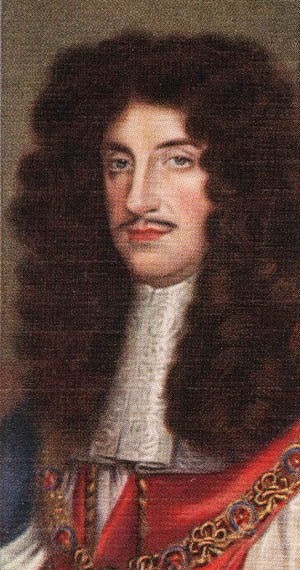
Charles II
1660-1685
Son of Charles I and Henrietta Maria of France. His adolescence and early manhood were spent in civil war, defeat, exile and poverty. Jubilantly restored in 1660 to his throne, he returned cynical and mistrustful. Though lazy, he was skilled in foreign affairs and, seeing Holland as England’s chief rival, made a secret alliance with France. With a strong taste for science and architecture he combined perception and wit above the ordinary, but was fatally unwilling to face unpleasant issues, finding intrigue easier. The “Merry Monarch” thought to escape from uncongenial burdens through his private amusements, but was disillusioned.
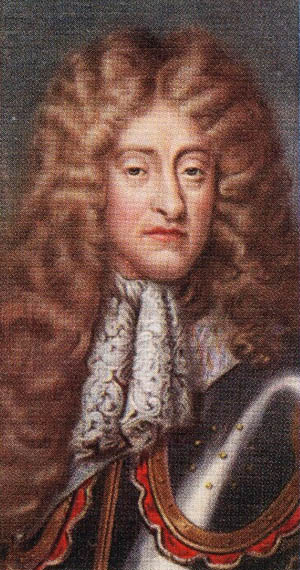
James II
1685-1688
Brother of Charles II, his upbringing, like that of Charles, was haphazard, but his personal character was in most ways stronger. As Duke of York he was energetic in public affairs, capable and courageous in naval administration and command, and loyal to his brother. But his conversion to Roman Catholicism was unpopular in 17th-century England. His efforts to emancipate the Catholics and to restore England to Rome ended in Revolution, and the flight of himself and his family. James married (i) Anne Hyde (ii) Mary of Modena. He died in exile in 1701.
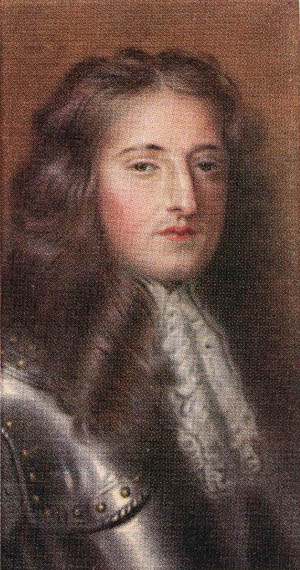
William III
1688-1702
William of Orange, a grandson of Charles I, married Mary, a daughter of James II. When James was deposed, William and Mary were invited to become joint-sovereigns of England. William’s ambition was to save the Netherlands from France and he welcomed the chance of bringing England into the European coalition against Louis XIV. A shy and retiring man, he made few English friends, though his statesmanship won respect; on the battlefield he displayed courage and genius. He died on the eve of war with France, and it was left to Marlborough to complete William’s task.
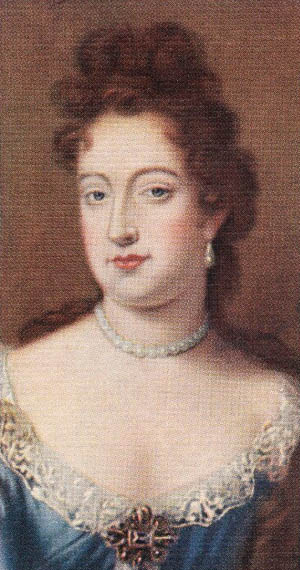
Mary II
1688-1694
James II’s eldest daughter was brought up as a Protestant, and at fifteen married William of Orange. Mary’s early life in Holland was lonely, but she became devoted to her husband. When her father’s Catholicism led to his deposition Mary and her husband consented to succeed him. She proved a capable partner, presiding over the Council during William’s absences. Mar’s sweet nature was shocked by the coarseness of the Stuart court. She had all the Stuart intelligence, loved learning, and endowed William and Mary College, Virginia. Her early death was a sever blow to William-and to England.
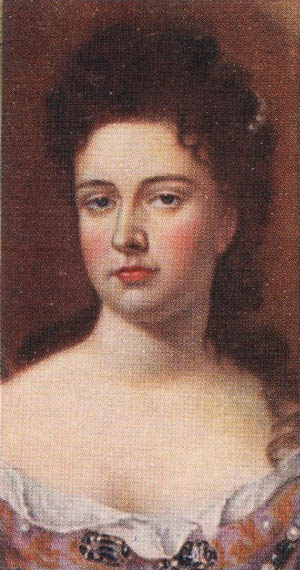
Anne
1702-1714
Anne was the daughter of James II and Anne Hyde. Brought up as a Protestant, she had early to choose between loyalty to her father and loyalty to her faith. Deprived of domestic happiness, she found consolation in her friendships, especially that with Sarah, Duchess of Marlborough. Her strong Anglican and Troy views hardened into hostility to the rapidly-growing party system. Though active in affairs of state, she found her real enjoyment in hunting and racing. England under Anne was great, but the Queen herself was eclipsed by the brilliance of her epoch.

George I
1714-1727
Great-grandson of James I (through his mother). George I succeeded Anne as Protestant heir of the Stuarts, having followed his father as ruler of Hanover in 1698. The failure of the Jacobite rising in 1715 gave him a better introduction to England than could otherwise have been hoped for, though he remained a stranger here, and never learned the language of his new subjects. His reign was occupied by the establishment of a new and more limited monarchy, Whig ascendancy and cabinet government. His wife, Sophia Dorothea of Celle, died in 1726.
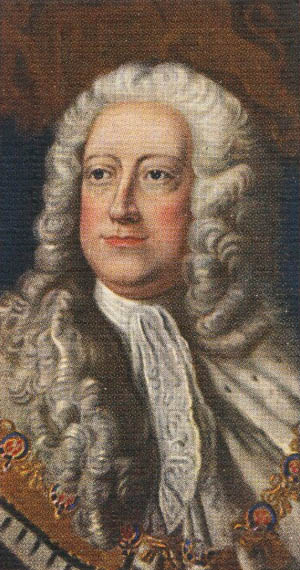
George II
1727-1760
Brought up in Hanover, George II was thirty-one when his father ascended the English throne. During the lifetime of his Queen he was wholly swayed by her in affairs of state, especially in her foreign policy of peace; but his own inclinations were for war and after Caroline’s death he embarked on campaigns against the French, and won great victories in Europe, India and America. As with his father, Hanover was first in his mind and he remained a foreigner in England. Brilliantly served by Walpole and Pitt, he was ungrateful to them as he Ws Ungracious to everyone else.

George III
1760-1820
Grandson of George II, he was the first English-born and English-speaking monarch since Anne. His views of kingship conflicted with the constitution, and for over twenty years he ruled largely by himself and through his friends, a policy which led to the American War and the loss of the colonies. Though finally submitting to his ministers, he remained an extreme Tory. Homely, domesticated and devout, he was popular with the middle-classes and in his mental powers, while they lasted; he was superior to his two predecessors. For the last ten years of his reign he was blind and mad.
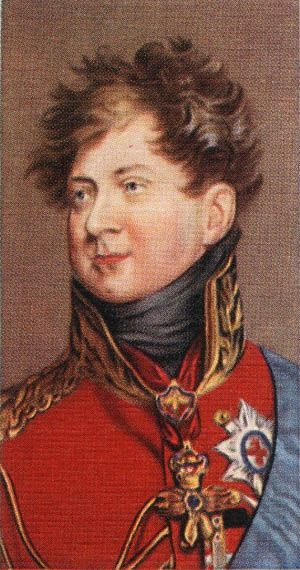
George IV
1820-1830
George IV, the son of George III, acted as Regent from 1811-20. A harsh upbringing resulted in dissoluteness and extravagance which lasted all his life. He married in 1785 Mrs. Fitzherbert (whom he was compelled to repudiate_ and in 1795 Caroline of Brunswick. Actuated largely by opposition to his father, he was a hindrance rather than a help in public affairs, and was dangerously unpopular, derided by the press and embarrassing to his ministers. But he was brilliantly gifted, cultivated, gracious, a noble patron of art and letters, and in person was the most distinguished monarch since Charles I.
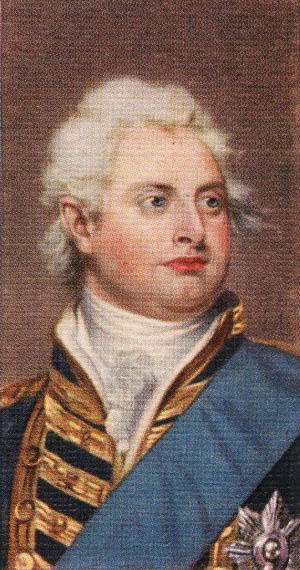
William IV
1830-1837
For ten years the young Prince William, brother of George IV served in the Navy afloat. In 1789 he was created Duke of Clarence and for the next forty years he lived the retired life of a country gentleman. In 1818 he married the Princess Adelaide of Saxe-Meiningen. The deaths of his elder brothers brought him, at sixty-five to the throne. As King he became popular, for he was known to favour reform, and though he was nick-named “Silly Billy,” he was very far from stupid.
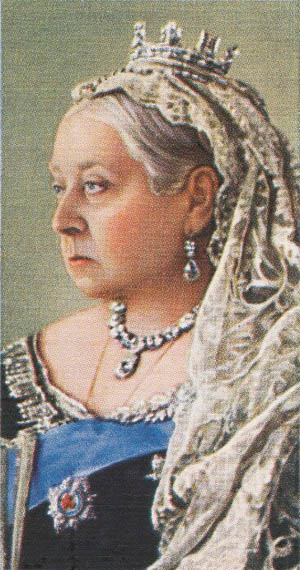
Victoria
1837-1901
Aniece of William Iv, the Princess Victoria ascended the throne at eighteen, and was married three years alter to Albert of Sace-Coburg. From then till his death in 1861 she remained largely dependent on him for advice in affairs of state, devoting herself to the cares of domesticity. With widowhood she retired from the public eye for twenty years; but the growth of imperial sentiment in her last years, bringing devotion and veneration, restored her own spirit and the prestige of the crown. She achieved greatness through her devotion to duty, vast experience And Incomparable dignity.
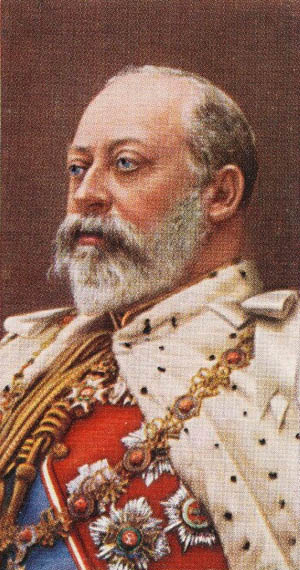
Edward VII
1901-1910
During sixty years’ apprenticeship as Heir, the son of Queen Victoria, was entrusted with no office of responsibility. His instinct for fellowship and sociability brought popularity and, from the austere, criticism. Supremely a man of the world, he reached the climax of acclamation by winning the Derby for the third time in 1909. His desire for peace was deep and, during his life, effective. He made himself familiar with political developments at home and abroad by entertaining the leaders of all parties, and by repeatedly travelling about Europe.
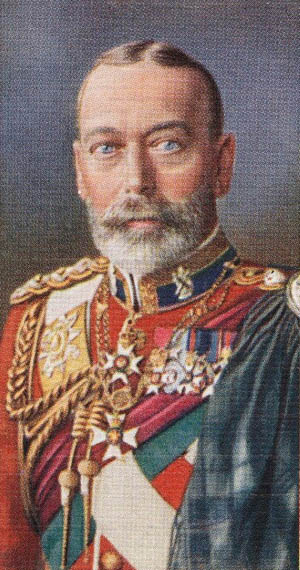
George V
1910–1936
In 1935 King George celebrates the seventieth anniversary of his birthday and the twenty-fifth of his reign. The second son of Edward VII, he became heir to the Throne on the death of his brother in 1892, and on May 6th, 1910, succeeded his father as King. During the Great War and the difficult post-war years, His Majesty’s bearing in public and industry in private have maintained the prestige of the monarchy, and enhanced its popularity. King George’s serous illness in 1928-9 evoked world-wide sympathy, and added a new fervour to the prayer “Long may he reign.”



